Your best photos submitted to the magazine this month
The Spaghetti Nebula
Michael P Caligiuri, Anza Borrego Desert, California, 25–26 November 2022
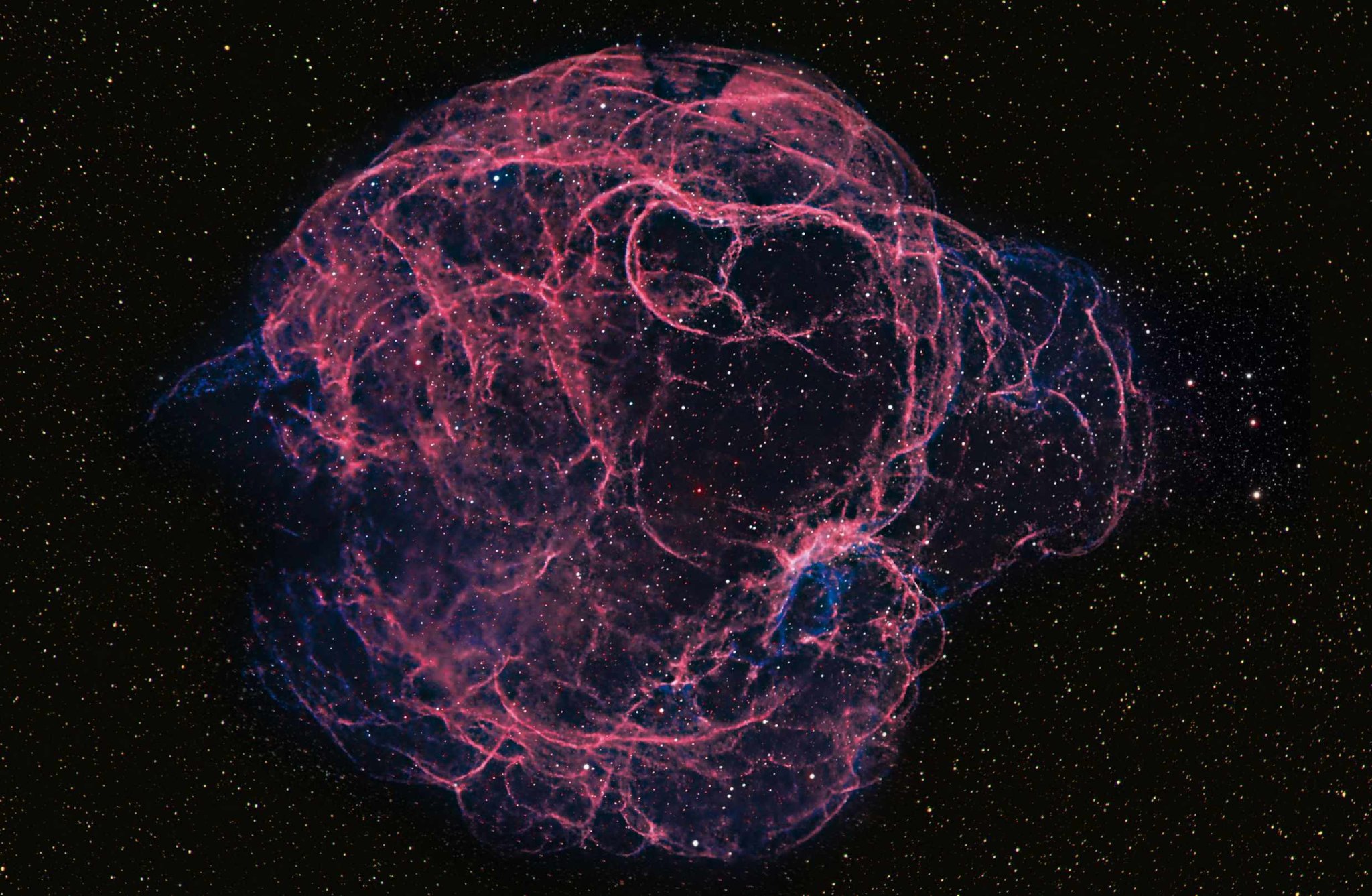
Michael says: “Sh2-240 is a supernova remnant located 3,000 lightyears away. It’s believed to be the remnant of a star that exploded 40,000 years ago. What sets this image apart from my prior attempts is that I was able to acquire sufficient OIII (oxygen). While dim, there is OIII throughout the filaments, a feature often missed in HaRGB images.”
Equipment: ZWO ASI294 camera, Samyang 135mm f/1.8 lens at f/4, Astro-Physics AP1100 equatorial mount
Exposure: 13h 45’
Software: MaxIm DL, CCD Stack, Photoshop
Michael’s top tips: “Shooting with a 135mm camera lens allowed me to capture a full 3°-span of the sky, and to frame it against a starry background. With that original field of view, cropping and framing to taste becomes easy. I’ve been adding RGB data to my narrowband workflow. Once the bi- or tri-colour narrowband layers are blended, I remove the narrowband stars using StarXTerminator and replace them with a more natural-looking RGB star layer. This blend of narrowband nebulosity against RGB stars can be stunning.”
Lunar occultation of Mars
Chris Kotsiopoulos, Reading, 8 December 2022
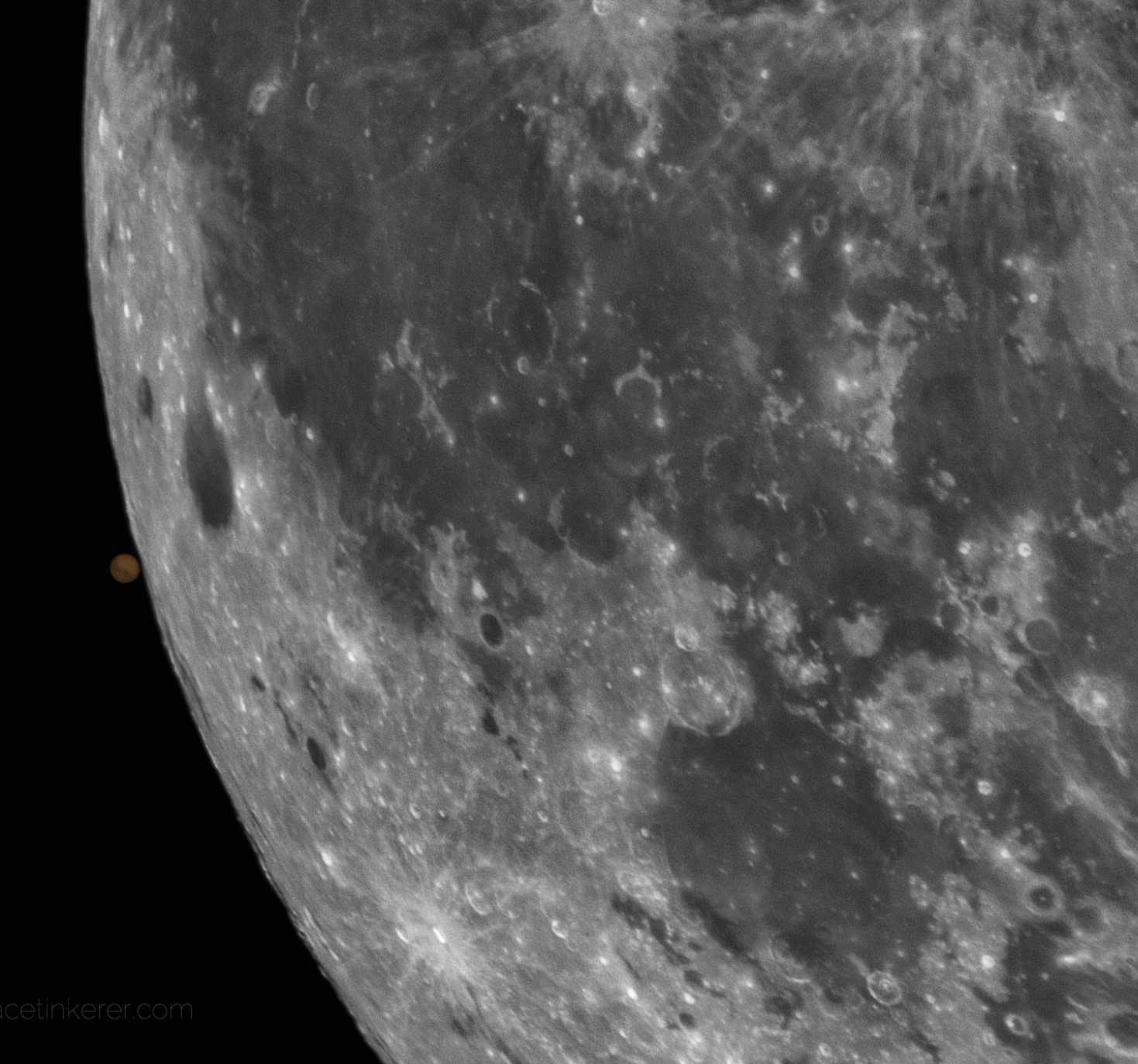
Chris says: “It’s quite an experience seeing Mars disappear behind the Moon and emerge after an hour. I was freezing cold with frost on my equipment, but it was worth it! The processing was a challenge, as I’d never shot an occultation with a CMOS camera.”
Equipment: ZWO ASI120MM Mini camera, Celestron C90 Maksutov, Sky-Watcher Star Adventurer Pro
Exposure: 40” video: 1,000 still images (best 25 per cent stacked)
Software: SharpCap, AutoStakkert!, Photoshop
The Double Cluster in Perseus
Shawn Nielson, Kitchener, Ontario, Canada, 14 November 2022
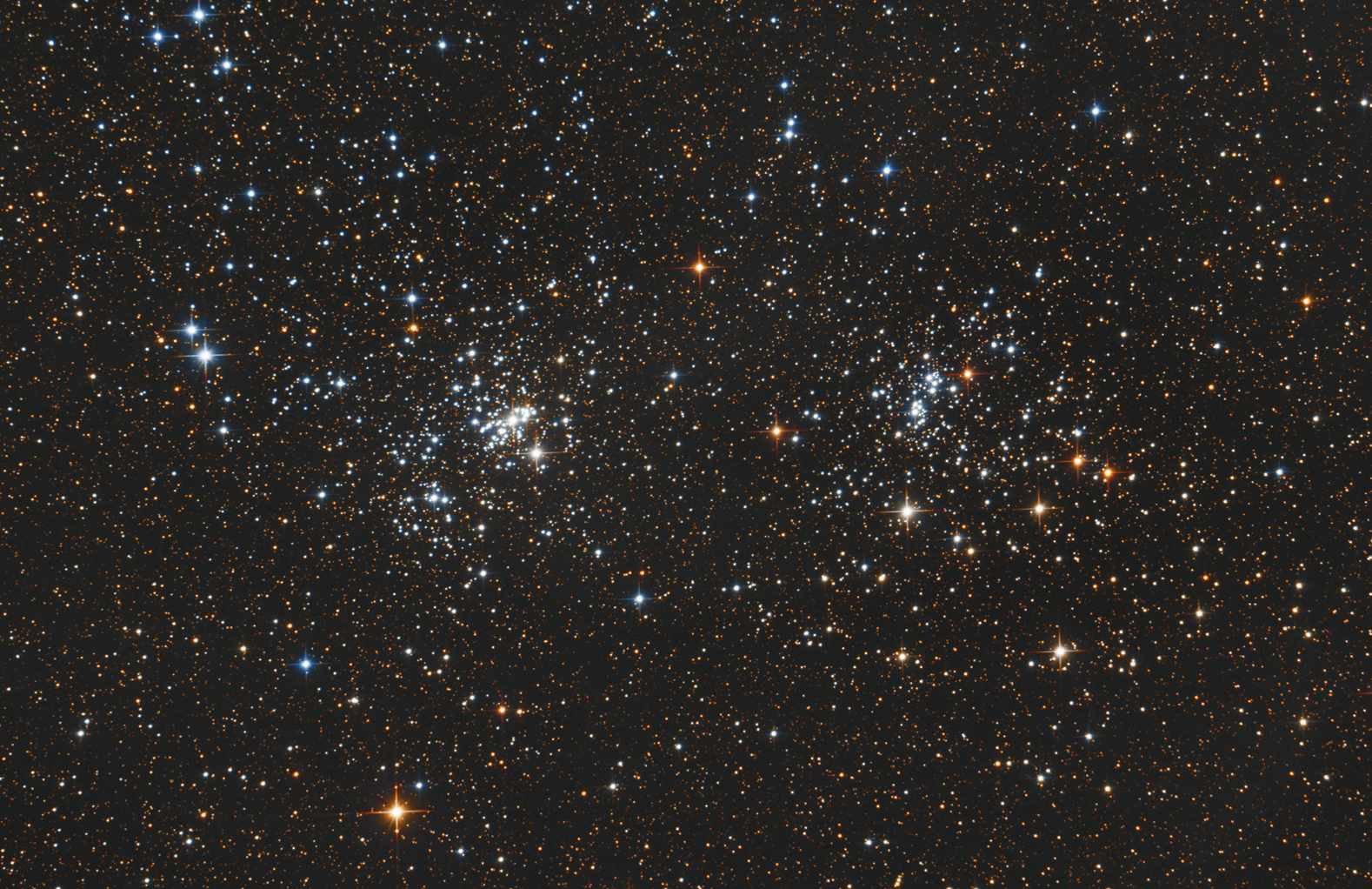
Shawn says: “I’ve noticed that clusters don’t seem to be imaged as much as more visually striking nebulae. I particularly like this pair of open clusters in Perseus with their pretty coloured stars, as they’re not too tightly packed together and not too far apart. The Double Cluster has just the right appearance. I used LRGB filters in my filter wheel for this image.”
Equipment: QHY268M camera, Starfield Optics 8-inch Newtonian reflector, Sky-Watcher EQ6 mount
Exposure: 3.5h
Software: NINA, PixInsight
Solar prominence
Anton Matthews, Bristol, 5 December 2022
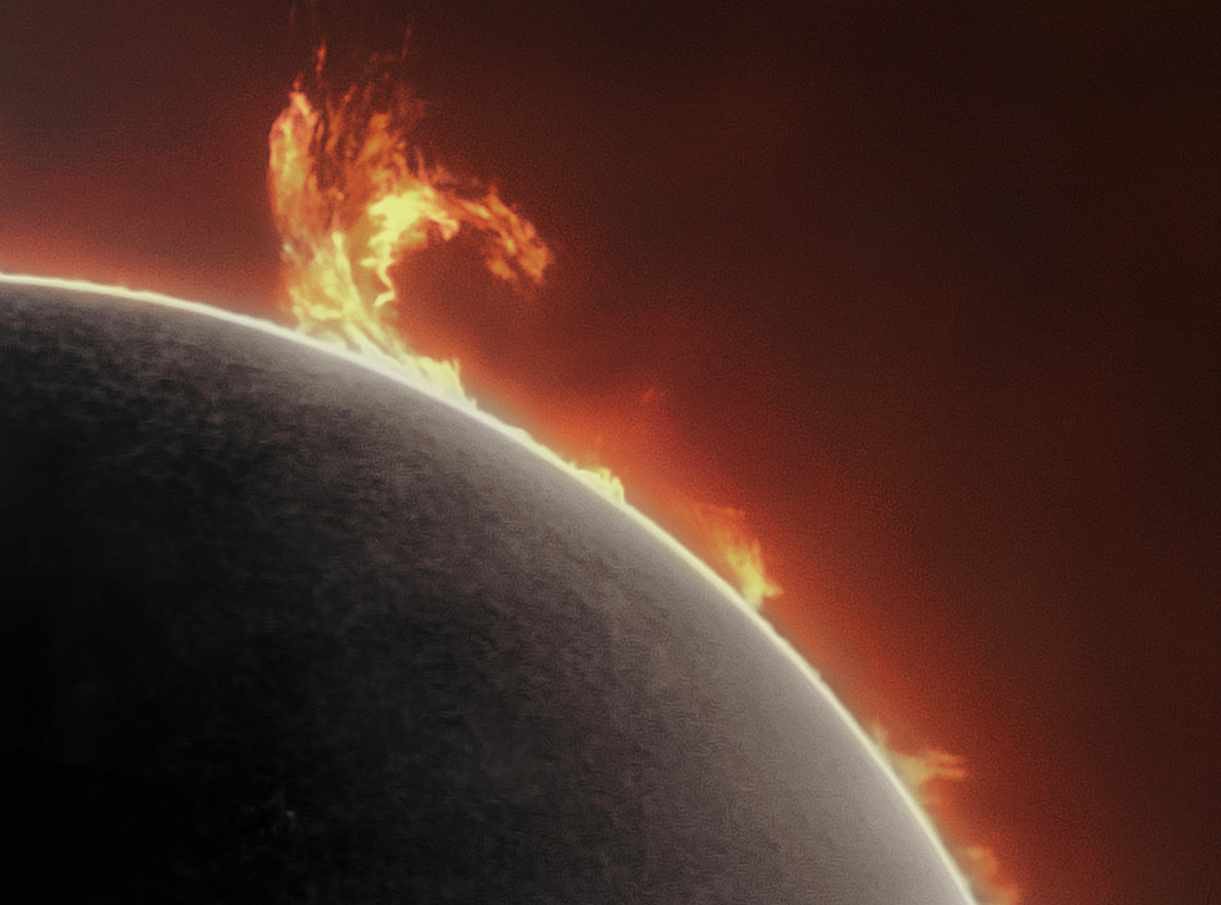
Anton says: “Recently I have become fascinated by solar astronomy, and the awe-inspiring chromosphere. I hope to upgrade my setup with a dual mount so I can photograph white light and Ha (hydrogen alpha) simultaneously. I caught this solar prominence ejecting from the disc at about 9:20am.”
Equipment: ZWO ASI224MC camera, Coronado Personal Solar Telescope, Sky-Watcher Solar Quest mount on Horizon photographic tripod
Exposure: 500 frames
Software: PIPP, AutoStakkert!, GIMP
The Bubble Nebula
Carl Gough, Littlehampton, West Sussex, October–November 2022, with some data from 2021
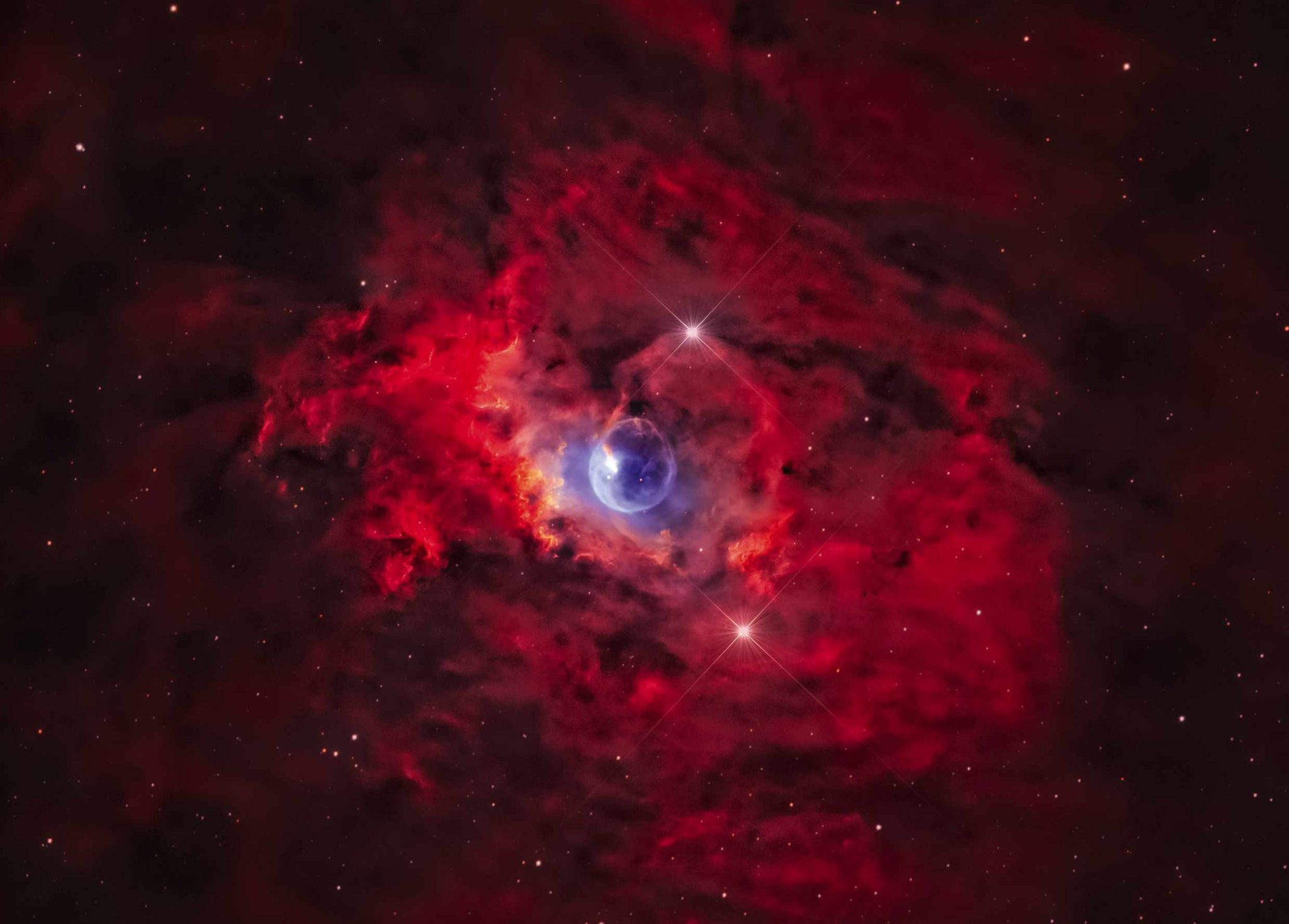
Carl says: “I call this the ‘bubbling rose’ due to the surrounding dust looking similar to a red rose, with a bubble at the centre. It’s actually the Bubble Nebula, or NGC 7635, and it resides approximately 8,000 lightyears away in Cassiopeia. The data was mostly acquired in late 2022, but I added some from 2021 to pull out some extra detail.”
Equipment: ZWO ASI1600MM camera, Orion 8-inch f/8 Ritchey-Chrétien astrograph reflector, EQ6 mount
Exposure: 118x 600” Ha, 63x 600” OIII, 58x 600” SII
Software: PixInsight, Lightroom, Photoshop
Mars occultation trails
Tomáš Slovinský, Kosice, Slovakia, 8 December 2022

Tomáš says: “Shooting was quite tricky, especially because of the weather. But a few minutes before the event, clouds above my backyard disappeared, only to reappear a few minutes after it had ended.”
Equipment: Canon EOS R6, TS-Optics 1,000mm Newtonian, Sky-Watcher Star Adventurer, Leofoto Summit LM-405C tripod
Exposure: 1/60”, ISO 100–1200
Software: Photoshop
The Andromeda Galaxy
Davy Viaene, remotely via the E-EyE Observatory, Spain, 3 and 8 November 2022
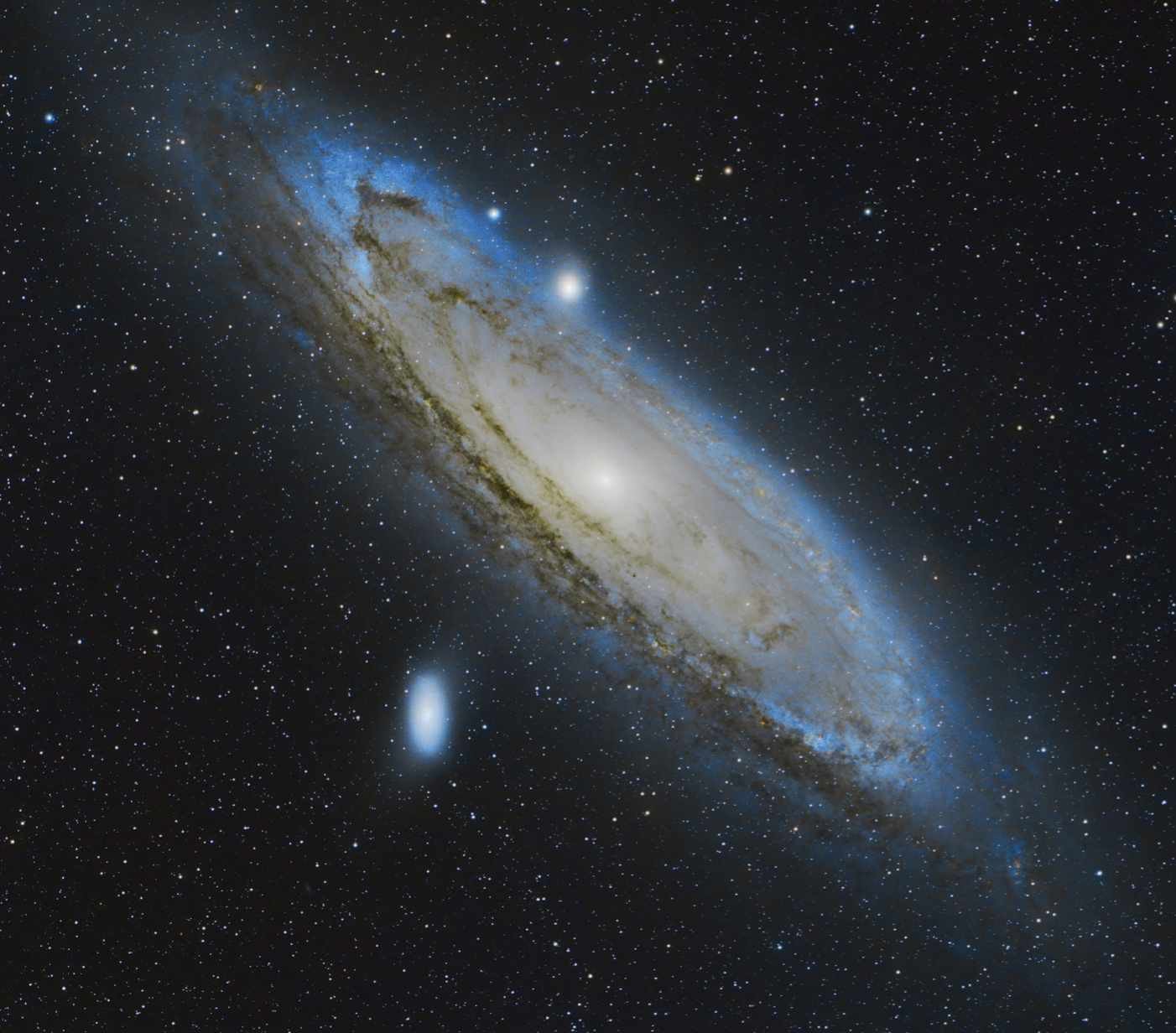
Davy says: “In autumn, the Andromeda Galaxy, M31, reaches high altitudes and is visible all night, which makes it ideal to aim at. The combination of telescope and camera makes it possible to frame the galaxy in one shot. In post-processing, I slightly changed the natural colours of M31’s outer parts, making them more blue. The technical challenge is always fun.”
Equipment: ZWO ASI6200MC Pro camera, Takahashi FSQ106ED III refractor, Paramount MyT robotic mount
Exposure: 4.5h
Software: TSX, CCD Commander, PixInsight
The Horsehead Nebula
Pat Devine, Edinburgh, 20 and 25 November 2022

Pat says: “I took up astrophotography in 2020 and joined the Edinburgh Astronomical Society, taking advantage of their online resources. I have seen pictures of the iconic Horsehead Nebula since I was a child, so it was one of the first targets I wanted to try to capture when I started imaging. I used narrowband filters to deal with the light pollution.”
Equipment: ZWO ASI183MC Pro camera, Celestron 8-inch Rowe-Ackermann astrograph reflector, Sky-Watcher HEQ5 Pro mount
Exposure: 3.4h
Software: PixInsight, Photoshop
The Dumbbell Nebula
Francis Bozon and Jean-Luc Gangloff from Team ARO, remotely via Alentejo Remote Observatory, Portugal, 4 August–28 September 2022
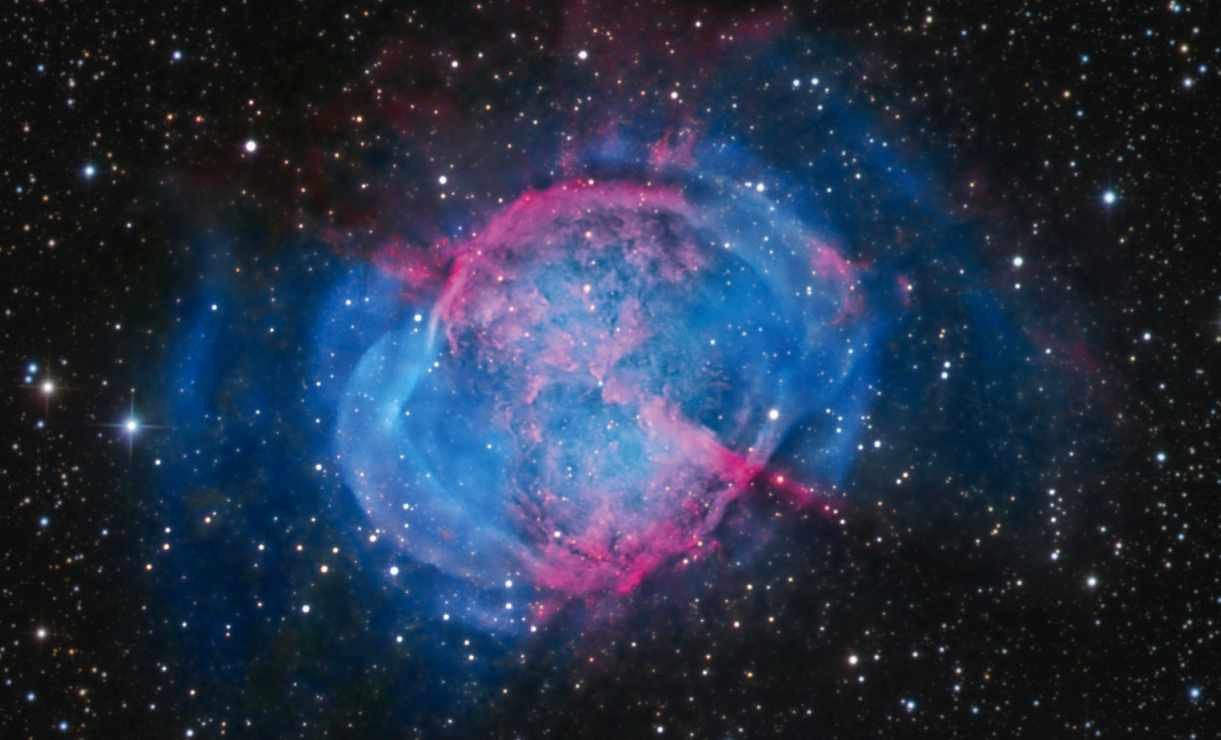
Francis says: “The Dumbbell Nebula is a planetary nebula located in the constellation of Vulpecula, about 1,227 lightyears away. It was discovered by Charles Messier in 1764 and is numbered 27 in his catalogue. Looking at M27 is like looking at the end of our own Solar System in five billion years’ time.”
Equipment: Moravian G3-16200 camera, Astrosib RC 400 Ritchey-Chrétien reflector, ASA DDM85 direct-drive mount
Exposure: 52h
Software: PixInsight, Photoshop
ENTER TO WIN A PRIZE. HERE’S HOW
Whether you’re a seasoned astrophotographer or a beginner just starting out, we’d love to see your images. Send them to us at www.skyatnightmagazine.com/send-us-your-astrophotos
We’ve teamed up with Modern Astronomy to offer the winner of next month’s Gallery a Hama lens pen, designed for quick and easy cleaning of telescope optics, eyepieces and camera lenses. It features a retractable brush and non-liquid cleaning element. www.modernastronomy.com • 020 8763 9953
More ONLINE
A gallery containing these and more of your images
www.skyatnightmagazine.com/bonus-content/RRX0AL4